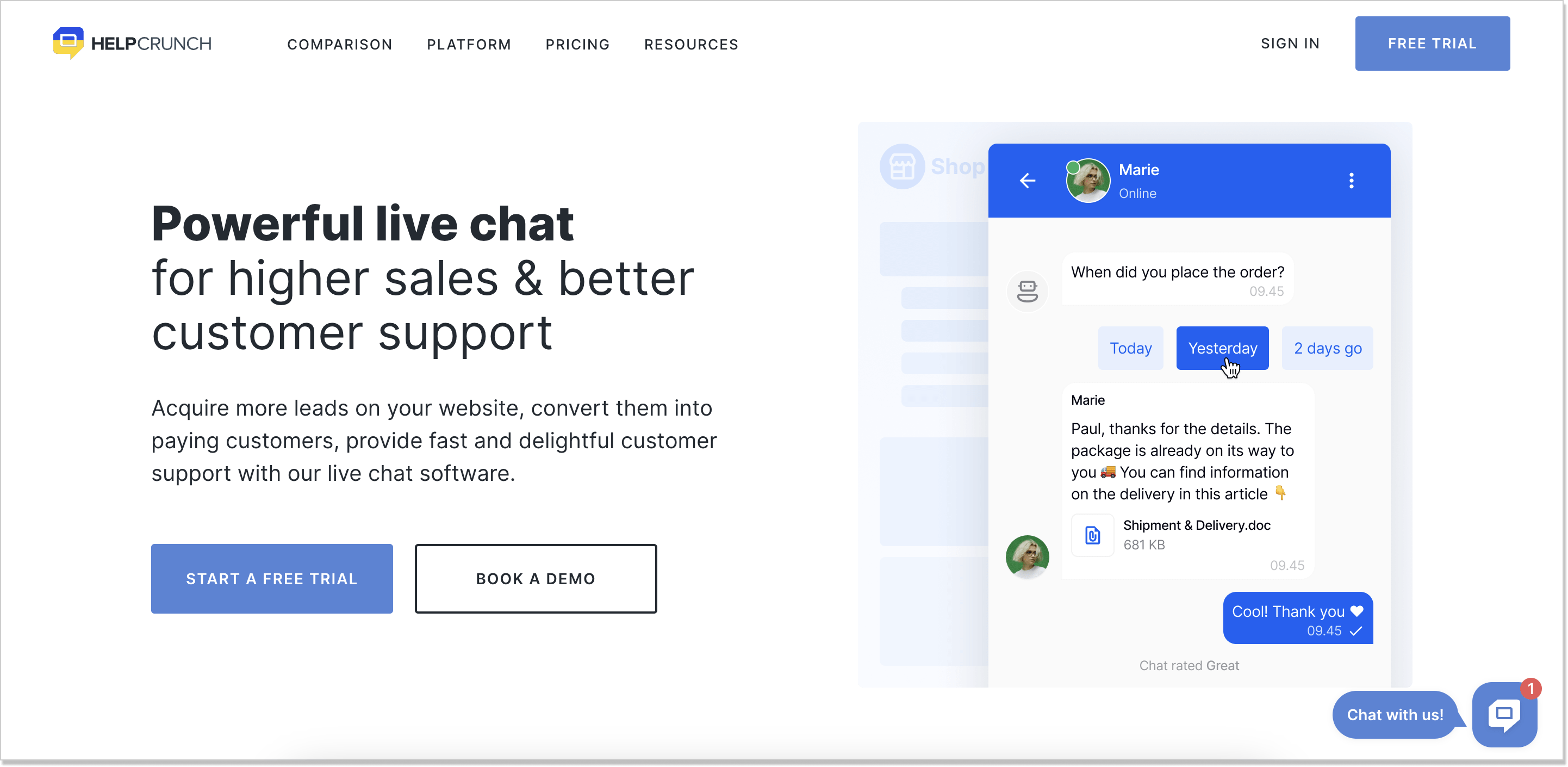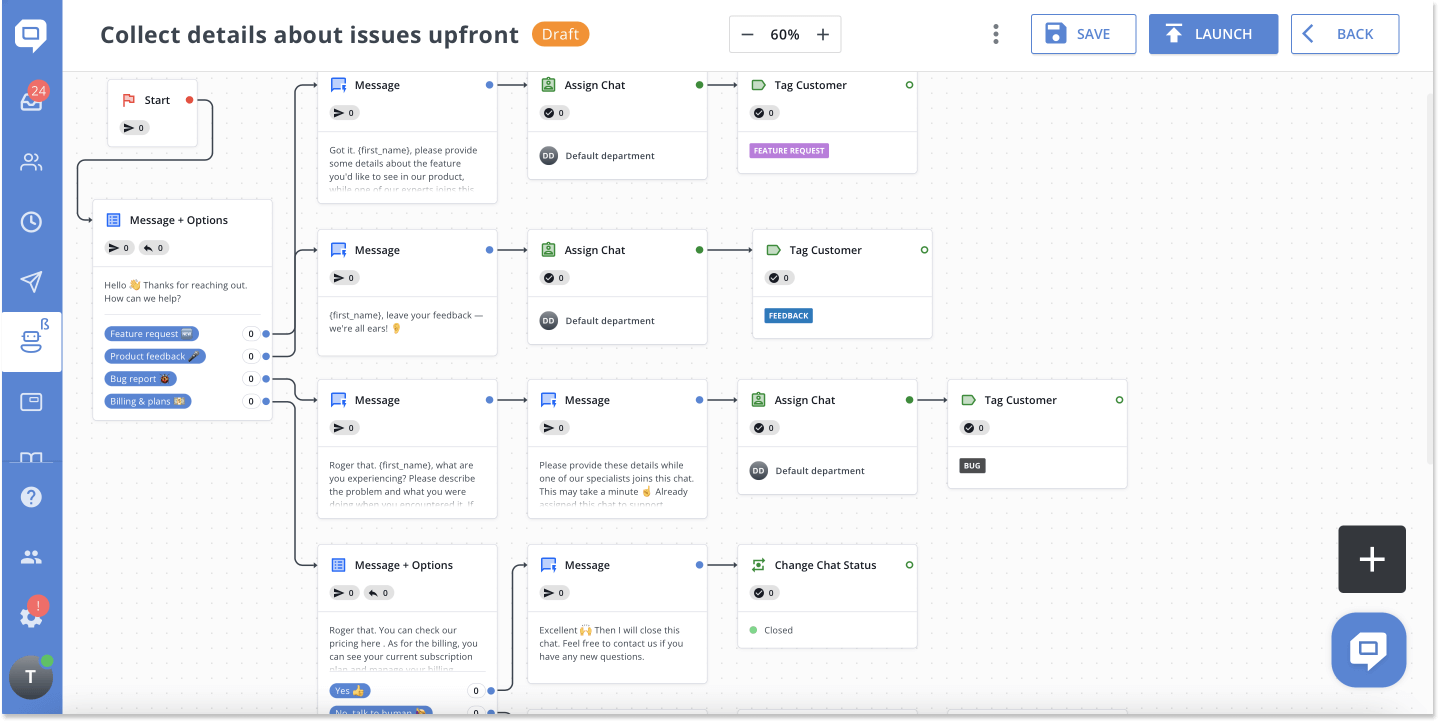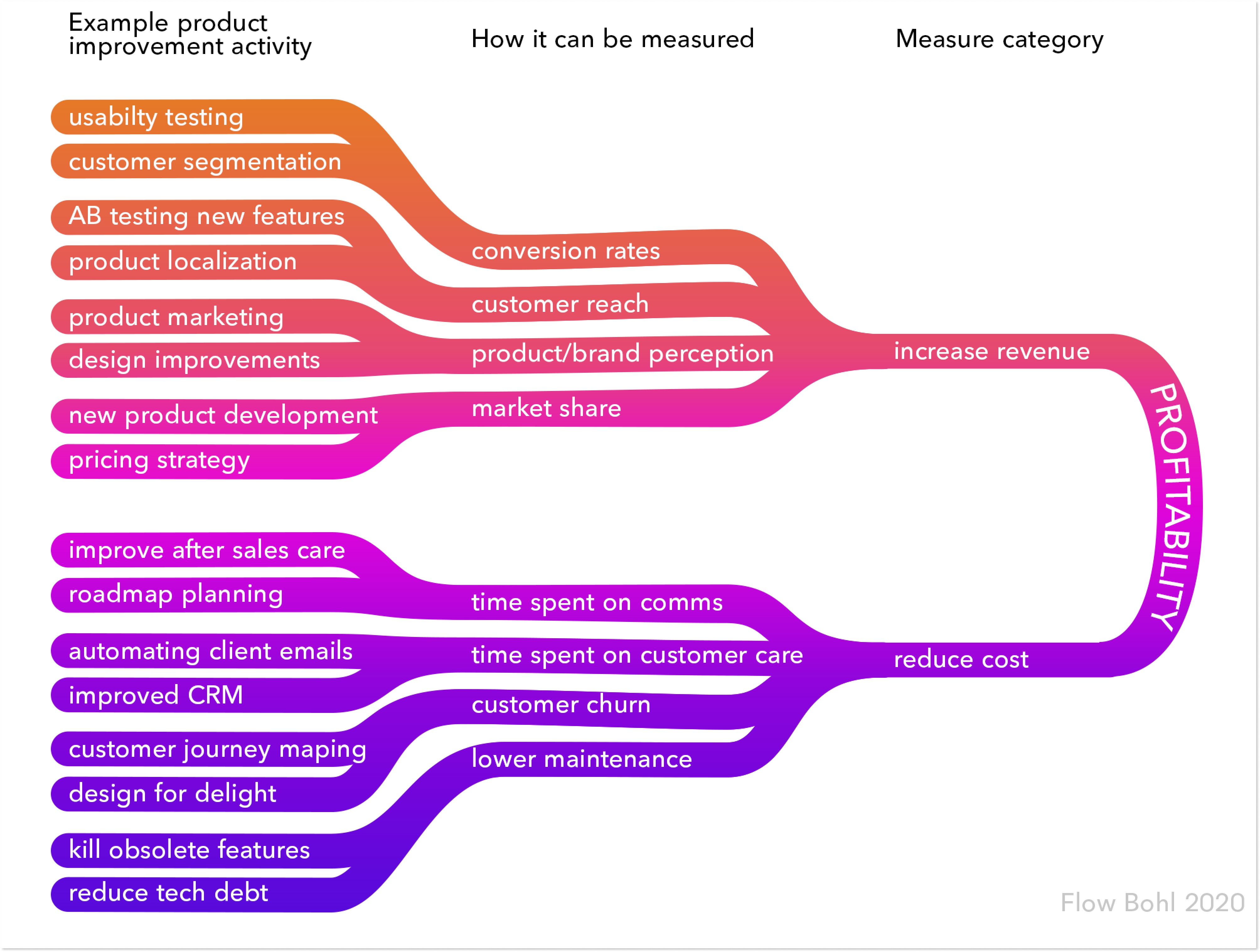6 Ways to Make Product Improvements That Everybody Loves
If you're dreaming of product improvement but don't know where to start, these 6 proven ways will come in handy.
Written by Olesia Melnichenko

Frankly speaking, there’s no ideal product or service in the world. The reason for that is simple: our community is constantly changing, brand-new technologies are popping up, and the consumers’ needs are evolving. That’s why all successful businesses adopt continuous improvement as a basic philosophy to withstand the competition and cater to buyers’ demands.
Today, people expect brands to continually wow them with new products or features. But in the rush to be the leader in the market, brands often overlook the essentials.
It happens because most business owners first consider the technical side. Sometimes, they disregard the future impact a newly implemented feature will have on clients. Moreover, they don’t understand if a team can implement intended improvements.
So, let’s step up to the core of product improvement and some impactful ways to make it without losing the main aspect.
What is product improvement?
Product improvement aims to bring about significant changes to get new clients or retain and recapture old ones. In fact, there are two ways of producing such improved products: adding fresh features and upgrading existing ones.
New specs and updates make a current product more advanced. Such a solution enhances the value proposition and expands the potential user base. Plus, it drives value for existing clients, diminishes churn rate, and contributes to building brand loyalty.
Bringing already existing features up to date is another story. You have three different opportunities here:
- Intentional improvements: Simply improve a product’s quality when you know why people use it and what value they see in it;
- Regular improvements: Tweak features so that people avail of a product more often and gain real, not potential, benefits;
- Introductory improvements: Change features you think will make the lives of new clients much easier.
Innovations can be risk-taking. All in all, you never know what your business will look like after and what results you will achieve. However, if you shape an improvement plan the right way, you have all the chances to hit the mark.
Go behind these six beneficial improvement ideas that will help you better understand the whole upgrading process.
#1 Embrace effective customer communication channels
Communication can make or break a business. Being able to interact with clients, no matter the context can result in increased sales, higher satisfaction rates, and positive referrals. In fact, by talking to people, you can gather valuable feedback from users, ask potential leads for feature requests, and understand their demands better.
A support team can do that and report all the data to a product manager. The latter processes it and decides what features should be added or how to upgrade already existing ones. As a result, you can develop a complete improvement plan.

An omnichannel customer communication platform may be the right solution to interact with clients better. It provides consistent and on-brand interactions across multiple touchpoints. An omnichannel communication strategy helps create a seamless user experience and achieve marketing goals faster. By choosing this approach, you can serve people in various ways and boost your brand image and credibility.
There are a great number of tools you can take advantage of when going omnichannel. We at HelpCrunch prefer to use live chat for gathering essential data. Our support agents mark every ‘feature request’ chat with a tag and add everything to a special table. This helps us see what clients ask for improvement and how often they do it. Also, in this way, we build a development map. When everything is done, a support expert informs clients so that they can check the newly added features.
#2 Identify pain points
The real triumph of a product centers around its ability to solve peoples’ particular problems. Such customer pain points are diverse and can be grouped into categories: financial, related to productivity, the buying process, or support. Pain points are when people waste too much time using current products, want to improve internal processes, or don’t get their sought-after assistance. To stay on top of the game, crack all of them before it’s too late. Here is what you can do:
- Create surveys with the right questions
Pose the survey questions in the right way and keep them on-topic to understand user behavior. For that, you can choose an option that works best for you: in-app, email, or pop-up surveys.
For instance, instead of asking, ‘How often do you change the settings in your account?‘ with such options as ‘Extremely often,’ ‘Quite often,’ or ‘Not so often,’ provide some accurate data: ‘I change the settings in my account..‘ with options ‘At least once a week,’ ‘Once in a month,’ ‘Once in 6 months‘, or ‘Never.’ Doing so lets you get some quantitative customer insights and take further steps.
Provide detailed open-ended questions for those eager to help with thorough answers. Let your creativity out and ask what problem a client was trying to handle before coming across your company, what product he would instead use if yours were unavailable, or what holds a user back from using yours.
- Let your sales team talk
Behind any deal hides a set of issues a prospect wants to solve during his user journey. And this can be everything from a pricing-related problem to some missing feature. To meet your prospects’ needs, let your sales experts find ways to help them close a deal. The following question may be of use:
– What does a prospect name as pain points?
– What does a prospect like or dislike about a product?
– Does a prospect make a comparison with another product?
- Check out your competitors
No matter your best efforts, buyer personas could be beyond your reach. However, you can still win their attention. Maybe your strategies need to be reconsidered. Here is when your competitors’ approaches might work for you, too.
Assess their landing pages, check their recently implemented features, or compare their pricing with yours. See if there’s something that you might have overlooked and how you can incorporate it into your product using your own marketing tactics.
Besides, doing Google research on their ads might be helpful as they are the ads that aim to define customers’ pain points. That’s not to say that you should strive to offer a copycat product; a healthy amount of product differentiation is also important.
#3 Connect vision to practice
In their efforts to understand future success, most teams simply track some key events to see how the numbers change weekly or monthly. This often results in team vulnerability to blind spots or gaps.
Identifying how each feature is used isn’t enough to avoid such mishaps and truly realize why people take advantage of a product. A better way is to reveal the purpose and develop a high-level product idea to prioritize features.
If you can articulate a clear vision, you’re more likely to earn clients’ approval. Plus, being able to share your enthusiasm makes it more possible for others to play a crucial role in the whole improvement process. Communicate with marketing and sales teams or developers to express your thoughts and bring about changes. With that in mind, your upgrading process will get a strategic basis.
#4 Specify the metrics
Once you’ve defined your features’ goals, work out the metrics for tracking them. The Internet is brimming with essential KPIs of all kinds a business should test. However, there’s no one-size-fits-all approach.
Take Airbnb or Booking.com services: if their value were only measured by DAU (daily active users), they would vanish. And yet, these companies are used several times a year and are still on a roll. Everything depends on your niche and the products you’re engaged with.
For instance, if you design an app, consider the DAU metric. If you run a SaaS, consider MAS (monthly active subscribers). And if you own a marketplace business with physical products, find a correlation between supply and demand.
To correctly identify your north star metric (NSM), you have to understand your clients, the value your product gives them, and how they use it to gain benefits. With that in mind, you should aim your product development process to increase customer lifetime value, decrease churn rates, and boost your revenue.
Go into the following questions that can help you define your NSM:
– What do I want to learn?
Focus on a user and not on specific events prevents false proxies that only look right on paper.
– What actions should people take?
Think through every step, from opening your app to using the exact feature and possible friction.
– When will clients find value in a feature?
Set the expectations for frequency of usage and the adoption rate, and see if your feature helps with customer retention or drives user engagement.
Defining the metrics can be a starting point in eliciting bugs your product might have. As a result, you have time to fix and improve it.
#5 Build a dedicated team
Enhancement can only be imagined with a team that will do its work at scale. If you want to have a squad that will be passionate about the product they’re currently developing, keep in mind these three concepts:
- Data-drivenness: Deliberate improvement should start with setting clear goals and preparing in-depth reports using current data. Consider including such components as questions your team wants to answer, analyzed data, unexpected findings, and next steps. Arrange regular meetings where you can discuss these points with team members to improve their reasoning and drive better data-driven conclusions.
- User-centricity: It’s all about customer interactions here. First, the customer journey can be much easier if your staff is familiar with a client onboarding checklist. Then, you can let your team create usability tests, do development sessions, or conduct solution-focused surveys. These simple tactics will help see whether a feature works well, what drives conversions, or if a proposed solution suits a client.
- Experimentation: Experiments should present a learning goal aligned with your boldest assumptions. Plus, make sure that you embrace several test types. It can be Concierge, Wizard of Oz, and other powerful techniques.
Remember that improvement should always be based on balance. Don’t leverage only one of the above mentioned aspects; mix them, and your end result will be head-turning.
Besides, the solution can also be seen in collaboration at different levels. An owner or a CEO should connect stakeholders, developers, sales, and marketing teams to build a shared vision and purpose of the product together.
#6 Gather feedback after launch
Once you’ve been through your improvement plan and all your fresh features are out in the open, don’t miss out on the chance to know what clients think. While all the numbers can help realize what users are doing, talking to them is a surefire way to understand why they’re taking specific actions. To get what you want, bear these critical points in mind:
- Provide the reason why you contacted a client
Ask yourself what you want to know and what results you want to achieve after the conversation.
- Reach out to the right users
No matter how you pose a question, you will likely receive no reply if it gets to the wrong person. Make sure you choose the right user segment based on its feature usage. Don’t send an email saying ‘If X feature works well’ to a user who hasn’t been with you for at least several months.
- Skip Yes/No questions
Unlike multiple-choice or Yes/No questions, open-ended questions help you see more details: how a feature was used, what the context was, etc. This way, you’re informed about what people like or dislike and if there’s a point for further improvement.
Product improvement example at HelpCrunch
Chatbot

One of the recent improvements at HelpCrunch is our chatbot functionality. It’s a relatively new and really long-awaited upgrade. As automation is an important part of online business, we wanted to provide our clients with more opportunities when they use HelpCrunch.
We went the extra mile and gathered our existing clients’ feature requests. Plus, we’ve done comparative research on our competitors and analyzed the market. After that, we concluded that chatbot improvement was worth it.
Our chatbot is a reactive (for now) bot that allows businesses to handle frequently asked questions, qualify leads, collect contact information, and much more. Users can leverage one of the carefully prepared chatbot templates or create their own bot flow from scratch.
Besides, we offer a visual no-code chatbot builder, which makes it super easy to create and edit various chatbot scenarios. Just imagine how you want your bot to communicate with users, add bot steps, and then click Launch.
Final thoughts
When you think that improvement is finished, you don’t just want to see the number of features your team pushed to production but to know how these new features moved the needle for your business.
Catching the purpose of what your potential improvements are meant to bring, having the right metrics, and being armed with user feedback is a formula for success. It’s also vital to gather a team ready to produce a product that will benefit people. At the end of the day, you strive to deliver value and keep customers happy. Sign up for HelpCrunch and make your improvements using advanced tools.





